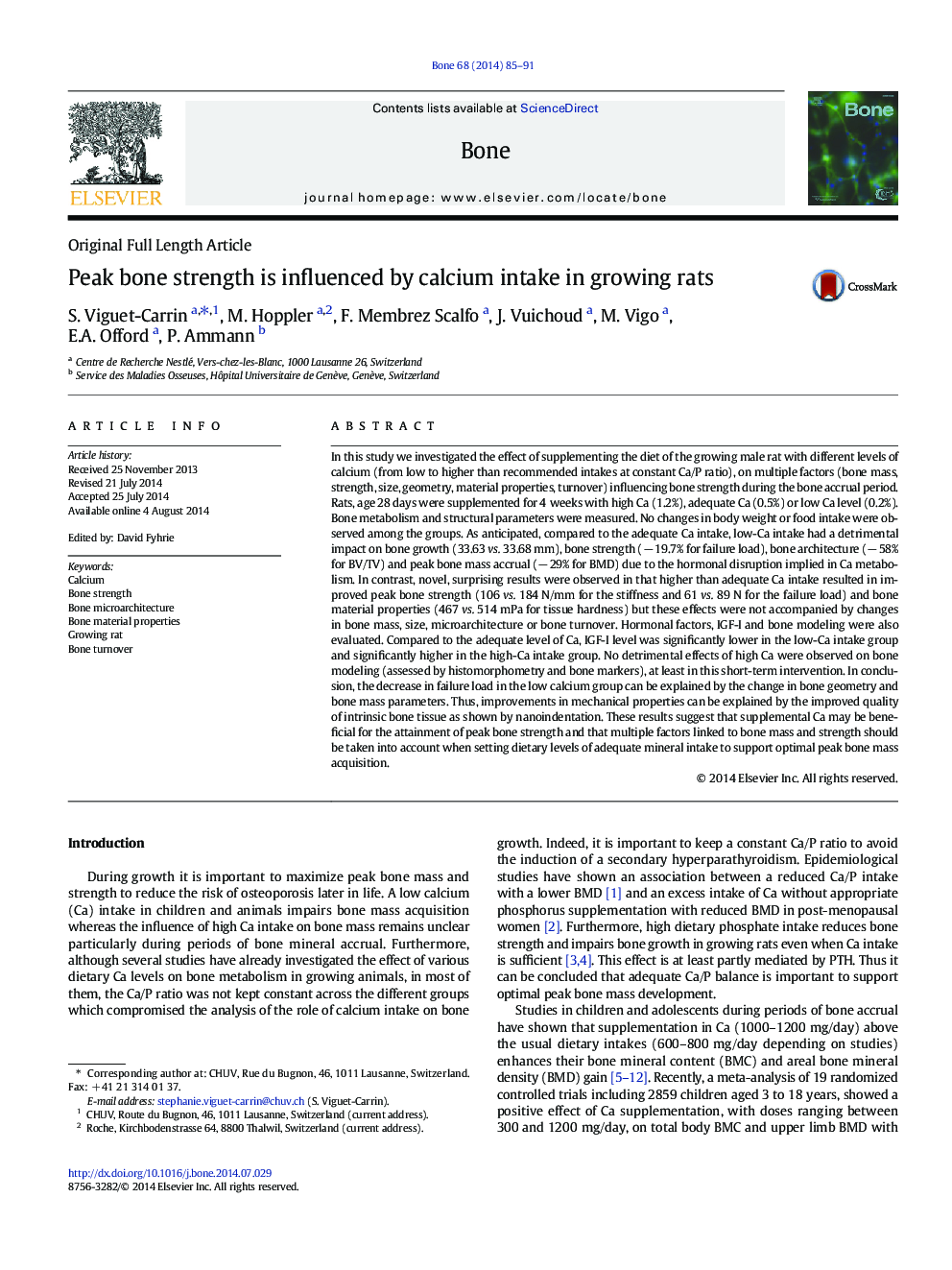| کد مقاله | کد نشریه | سال انتشار | مقاله انگلیسی | نسخه تمام متن |
|---|---|---|---|---|
| 2779195 | 1568151 | 2014 | 7 صفحه PDF | دانلود رایگان |
• In growing rats, Ca intake affects bone strength, BMD, architecture and quality.
• High Ca intake improves peak bone strength but not bone mass or architecture.
• Low Ca intake impacts negatively on peak bone strength, geometry and architecture.
• Material level properties represent a major determinant of bone strength.
In this study we investigated the effect of supplementing the diet of the growing male rat with different levels of calcium (from low to higher than recommended intakes at constant Ca/P ratio), on multiple factors (bone mass, strength, size, geometry, material properties, turnover) influencing bone strength during the bone accrual period. Rats, age 28 days were supplemented for 4 weeks with high Ca (1.2%), adequate Ca (0.5%) or low Ca level (0.2%). Bone metabolism and structural parameters were measured. No changes in body weight or food intake were observed among the groups. As anticipated, compared to the adequate Ca intake, low-Ca intake had a detrimental impact on bone growth (33.63 vs. 33.68 mm), bone strength (− 19.7% for failure load), bone architecture (− 58% for BV/TV) and peak bone mass accrual (− 29% for BMD) due to the hormonal disruption implied in Ca metabolism. In contrast, novel, surprising results were observed in that higher than adequate Ca intake resulted in improved peak bone strength (106 vs. 184 N/mm for the stiffness and 61 vs. 89 N for the failure load) and bone material properties (467 vs. 514 mPa for tissue hardness) but these effects were not accompanied by changes in bone mass, size, microarchitecture or bone turnover. Hormonal factors, IGF-I and bone modeling were also evaluated. Compared to the adequate level of Ca, IGF-I level was significantly lower in the low-Ca intake group and significantly higher in the high-Ca intake group. No detrimental effects of high Ca were observed on bone modeling (assessed by histomorphometry and bone markers), at least in this short-term intervention. In conclusion, the decrease in failure load in the low calcium group can be explained by the change in bone geometry and bone mass parameters. Thus, improvements in mechanical properties can be explained by the improved quality of intrinsic bone tissue as shown by nanoindentation. These results suggest that supplemental Ca may be beneficial for the attainment of peak bone strength and that multiple factors linked to bone mass and strength should be taken into account when setting dietary levels of adequate mineral intake to support optimal peak bone mass acquisition.
Figure optionsDownload high-quality image (88 K)Download as PowerPoint slide
Journal: Bone - Volume 68, November 2014, Pages 85–91
